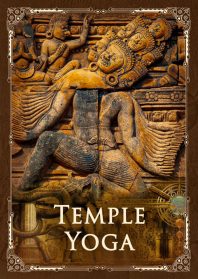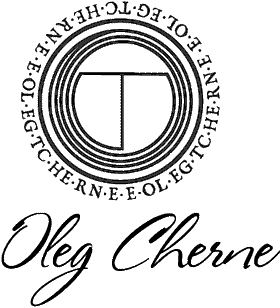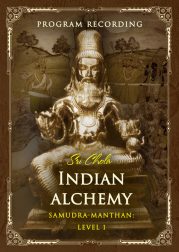Temple Yoga

Temple Yoga is a particular kind and style of body architecture perfection that is associated with the process of reincarnation and is the art of special temple service. It is a form of unity that is accomplished through the development of the body according to spatial architecture. Such a form of body knowledge was used at a time when the human spirit had not yet begun to be lost to the physical body.
As a system of knowledge, temple yoga was embodied in the concept of avatar. This concept involves understanding the nature of embodiment and being able to perceive it. This type of yoga implements the higher knowledge, and if one steadily follows the task of manifestation, this implementation becomes possible even with a lack of skill and understanding of the principle of action that one may not see at the beginning of the path.
This process of realization is called “avatarati” (descending, Sanskrit), and it involves the development of certain inner qualities (which is expressed in the hamsa symbol), the development of inner vision (expressed in the idea of Lakshmi’s hands).
The temple yoga is the twelve types of embodiment, the manifestation of the inner capacities of the body to preserve one’s inner nature and to form connections with the nakṣatra – the heavenly houses, the constellations.
- Matsya
- Kūrma
- Varāha
- Narasimha
- Vāmana
- Mapdapa
- Ayodhya
- Śaṇkha
- Dvara
- Kalki
- Padma
- Śudarśana
Temple yoga seeks to build the architecture of the inner temple of the body, which contributes to the construction of outer space. It views the space of the macrocosm as the body. Thus the construction of the temple begins within the body, then around the body, and then continues with constant construction and renewal. This is a particular layer of knowledge about the beginning of Aditi, which implements light energy.
Temple yoga has undergone many changes in the form of its representation in the course of its development. This strand has gone from irrational formation to transcendental. Temple yoga includes an important practical part related to the “Churning of the Ocean of Milk,” or the special skill of breathing, feeding on amrita, which was established in the Khmer tradition.
And here of particular interest is the ancient Khmer ceremonial art of Chol Mlob, based on the perception of the development of a woman’s nature from the perspective of amrita (perfect breath) and soma (perfect nourishment), which contributes to the perception of the body as a temple. This type of ceremonial attitude toward nature is also reflected in the Khmer ceremony of adulthood.
In ancient Khmer tradition, development, in general, was understood from the perspective of temple space construction. The first year required receiving the inner light, and the construction of the inner temple required 13 years. This principle can also be seen in temple yoga, which is a practical way of getting inner light.
Today it is a type of yoga, so to speak, overlooking the legendary Khmer temple complex Angkor Wat, which embodies the perfect heavenly architecture, as it was built on the principle of the temple of light to maintain the luminosity of the constellation of the Dragon.
Temple yoga is attuned to filling with power and light (Shakti) to carry the higher energy into the space of the Universe, which is, in fact, the energy of light.
The ability to understand the nature of embodiment presented in the concept of avatars has found application in the idea of the embodied power of Vishnu “entering into all things.” And with temple yoga, as well as with the concept of avatar, it is Vishnu who is primarily associated with it. And while space is threatened by evil forces, temple yoga is a kind of avatar to prevent chaos and destruction. The task of the temple yoga movement is to restore harmony to space and restore balance, which is facilitated by the twelve forms of balance, or twelve harmonics.








